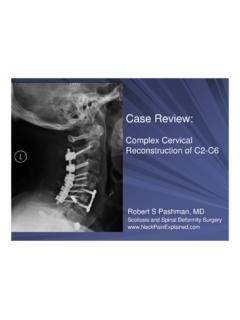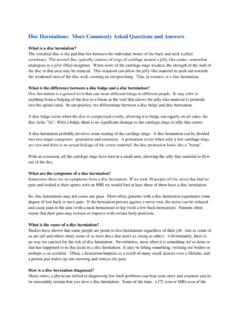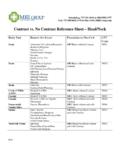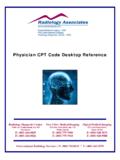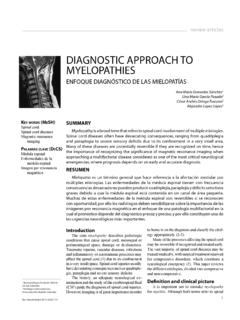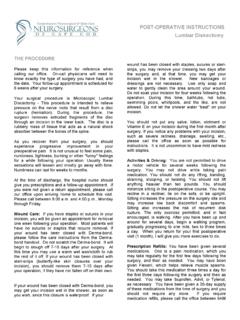Transcription of MRI OF THE CERVICAL SPINE WITHOUT CONTRAST
1 MRI OF THE CERVICAL SPINE WITHOUT CONTRAST CLINICAL HISTORY: Neck pain. No known injury. TECHNIQUE: Sagittal and axial multiecho imaging through the CERVICAL SPINE WITHOUT CONTRAST . FINDINGS: No prior exams. Normal marrow stores are seen in the visualized osseous elements. The vertebral bodies are normal in height and alignment and normal CERVICAL lordosis is seen. The craniovertebral junction is unremarkable. disc desiccation is noted at all levels visualized in the CERVICAL and upper thoracic SPINE .
2 There is loss of disc height at C5-C6 and to a lesser degree at C6-C7. A small rounded focal lesion is seen in the leftward inferior end plate of T3 which measures 7 mm with signal intensity cost with fat. C2-C3: No disc herniation or bulging. No canal or foraminal stenosis. C3-C4: No disc herniation or bulging. No canal or foraminal stenosis. C4-C5: No disc herniation or bulging. No canal or foraminal stenosis. Mild right facet hypertrophy is noted. C5-C6: A broad based mixed protrusion is seen which extends into the foramina and is slightly prominent left paracentrally.
3 It results in ventral thecal sac effacement and there is slight flattening suggested of the leftward ventral aspect of the cord. In conjunction with uncovertebral joint spurring and facet hypertrophy there is moderate to severe bilateral foraminal stenosis. Mild central canal stenosis is noted. C6-C7: Mild posterior disc bulging with uncovertebral joint spurring and facet hypertrophy resulting in mild bilateral foraminal stenosis. C7-T1: No disc herniation or bulging. No canal or foraminal stenosis. Apart from the slight mass effect upon the leftward cord at C5-C6, the spinal cord is normal in course, caliber, and signal intensity.
4 IMPRESSION: 1. Multilevel DDD with DJD at levels described above and broad based mixed protrusion at C5-C6 effacing the ventral thecal sac and slightly flattening the leftward ventral aspect of the cord and also resulting in moderate to severe bilateral foraminal stenosis. 2. Posterior disc bulging with facet hypertrophy and uncovertebral joint spurring resulting in mild bilateral foraminal stenosis at C6-C7. 3. Small hemangioma in the T3 vertebra. Thank you for your kind referral of this patient. We appreciate the opportunity to participate in this patient's care.
5 -Electronically Signed by: RADIOLOGIST ADMIN, MD, CERTIFIED BY ABR On 06/05/2010 4:58:13 PM EST


